A Getaway with a Purpose
Running around & learning about what's at stake in the North Fork Valley
This week, I’d like to tell you about a weekend getaway with a cause. I know from the recent reader survey that some of you don’t like travel posts or Colorado-specific posts—you’re here for running-related content—but I hope you’ll hang with me for this. (Scroll to the second half if you only want a running story.)
This is about a slice of Colorado called the North Fork Valley, and about public lands management around there, but rural/agricultural communities everywhere share some of its issues.
If you want wild, scenic, open places with clean air to run and hike, and for wildlife to traverse and thrive; if you want regionally grown and seasonal fresh, healthy food (instead of buying produce shipped halfway around the world); if you want wilderness and open space for future generations; and if you want to advocate for a key piece of the climate-change puzzle to slow warming, then this story matters.
We drove 2.5 hours Thursday to Paonia, east of Delta and Grand Junction, which is in a valley known for being Colorado’s organic-agriculture hub. I had never spent time in Paonia (elevation 5680’) or its neighboring town of Hotchkiss except when driving through on the way to Carbondale.
We checked into a historic hotel that is a charming B&B (with all the pros and cons of “charming,” e.g. historic photos on the walls, but those walls are thin; specially prepared gourmet breakfasts, but you gotta eat at a specific time and eat whatever they serve). Overall, I’d recommend the Bross Hotel and be happy to stay there again.
This was a group trip organized by the Conservation Lands Foundation (CLF), a Durango-based nonprofit I’ve actively supported since about 2015. In a nutshell: CLF is the only nonprofit dedicated to protecting and expanding the National Conservation Lands, which are managed by the Bureau of Land Management (BLM). The National Conservation Lands are America’s newest public lands and lesser known than our National Park system. The umbrella category of National Conservation Lands includes areas designated and protected as national monuments, conservation areas, scenic and historic trails, wild and scenic rivers, and wilderness study areas. These designated areas don’t just protect nature; they also protect cultural and archeologic treasures (such as the Ancestral Puebloan dwellings and rock art I observed on an earlier CLF-organized trip to Bears Ears National Monument; trip report here).
The BLM manages about 248 million acres of public land, and only about 15 percent are protected as National Conservation Lands. That leaves the rest open to development, mining, and other activities. This matters because intact, unspoiled open spaces are needed for wildlife corridors, biodiversity, carbon storage, and low-impact (non-motorized) recreation. Selling or leasing them for extractive purposes, especially oil and gas drilling, not only contributes to global warming but also threatens the character and economy of towns like Paonia, which rely on small-scale agribusiness, recreation, and tourism.
One of the best things CLF does, in addition to advocating in state legislatures and D.C., is bring together and fund some 80 smaller grassroots environmental groups doing community-based work as watchdogs and advocates for conservation on BLM and Forest Service land. A main purpose of our trip was to learn about one of these groups, the Western Slope Conservation Center (WSCC), and the work it’s doing in and around Paonia.
On Friday morning, Morgan joined the group to tour the region in a single-engine plane, so they could see from air some areas that WSCC is working to designate as an Area of Critical Environmental Concern—pieces of undeveloped land key for wildlife corridors.

The birds-eye view of Paonia reveals the North Fork of the Gunnison River winding past orchards and vineyards, flanked by mountains that are part of the West Elk Mountain range. Most dramatically, it also shows the soft, gray-tan, chiseled hillsides formed from Mancos shale, a type of rock in the West filled with marine fossils and a source of gas, oil, and coal. Coal mining used to thrive in this region, and now most of the coal mines near Paonia have been shut.
I have an aversion to small planes and wanted to explore by foot, so I took off on my own to loop around the restored Paonia River Park, next to the North Fork of the Gunnison. This lovely park has paths with signage and structures adorned with metal figurines created by a local artist. It’s all here thanks to the Western Slope Conservation Center marshaling resources and volunteers to transform the area from a gravel mine—with no public access to the river—to an environmental-education park with a restored riparian habitat.

From the river, I ran through town until I found the unmarked trailhead for Jumbo Mountain. Despite its name, this dry mountain looks more like the hump of a big hill, rising about 1200 feet on the east side of Paonia.
Jumbo Mountain is a case study in good intentions with unintended consequences and too much of a good thing—in this case, too many trails. For several decades, mountain bike enthusiasts developed trails there without an overall plan. The labyrinth of trails turned the mountain into a much-loved destination for bikers and hikers, but also scared away most of the elk and mule deer that migrated through there. Two decades later, the elk and deer population in the region are way down.
Now, however, the mountain’s use is being managed. Earlier this year, advocates and stakeholders for the recreation area—including the WSCC—agreed upon a plan to reduce, reclaim, and reroute some of trails. In coming months, trail signage will be installed, and the mountain will be better managed to balance recreation with wildlife.
Without a map or signage, I managed to zigzag up nearly to the summit, to a vista that revealed a panorama of Paonia’s green agricultural areas and its tree-filled town. The blue sky, flowy trails, and mild temps made for a blissful 11-mile run.
During other parts of the weekend, we took a group hike to learn about a place gaining designation as an Area of Critical Environmental Concern, and about the WSCC’s advocacy for a resource management plan that limits oil and gas projects and protects the region’s watershed. We also floated down the Gunnison River, to see and learn about the Gunnison Gorge National Conservation Area, led by Western Slope SUP outfitters in Hotchkiss (I highly recommend a river trip if you visit this area!).
Every meal became a learning experience, too, as we sampled local greens, fruits, wine, and ciders. Highlights were eating at Big B’s orchard, Root and Vine, and a catered meal at Thistle Whistle Farm.
Farmer Mark Waltermire, who runs Thistle Whistle, talked to us about the challenges of growing diverse crops in rising temps (his tomatoes and eggplants suffered in this summer’s heat wave), and what he’s doing to keep the soil healthy and crops resilient. We had a dinner there full of greens and vegetables from the farm, cooked by local Kathy Swartz. The entire evening inspired me by witnessing a such a hard-working, caring operation dedicated to better health for the environment and for people.
I left the weekend feeling more committed to support CLF’s work (and the “friends groups” like WSCC they support), and to eat and shop in a way that supports small-scale, environmentally responsible agribusiness.
If you want to add your support, please visit the Conservation Lands Foundation’s site and consider making a donation. If you visit Paonia or Hotchkiss, connect with the Western Slope Conservation Center. Bonus: check out these one-page infographics on the National Conservation Lands within individual states, including Colorado.
Back on track
A half mile from our B&B in Paonia lay a quarter-mile track tucked into a bank below the state highway. It was so inconspicuous—no stadium seating, no big sign—I might not have noticed, but the football goal posts caught my eye.
This track and its field no longer get used like they used to because two years ago, the Delta County School District merged Paonia’s high school with the neighboring Hotchkiss high school in the face of small, dwindling enrollment caused in part by the loss of the region’s coal-mining jobs. The new school, rebranded North Fork High, is 11 miles down the road in Hotchkiss, and Paonia’s old high school now is for K – 8 grades.
Consequently, this track and its football field in Paonia lost its status as a high school hub of activity. As soon as I saw it up close, I could tell it had seen better days. The old-school crushed gravel surface was uneven and lacked lane lines. Crab grass and weeds extended from the field and sprouted in the inner lane of the track. The field needed mowing.
It was my kind of track—imperfect, slower, older, vacant. Completely non-intimidating and open to anyone. I felt drawn to go there Sunday morning and, with no one watching, execute a legit track workout for the first time in … I can’t even recall how long it’s been.
Telluride doesn’t have a proper track due to space constraints (students run around the edge of the rectangular playing field and on the bike path). Therefore, I don’t run track the way I used to weekly in California. I improvise occasional speed workouts along a relatively flat path, using my watch to measure distance. But it’s never the same or as satisfying as a true track workout. It’s always slower, due to the irregular surface and slight inclines, and imprecise. And I repeatedly look at my wrist while running to check the distance measured by GPS (which also is imprecise).
Running track, by contrast, is methodical, repetitive, and exact. Seconds matter. I used to run track intervals aiming to hit certain times within a range of just two or three seconds—a precision that’s both motivating and intimidating, fueling a love-hate relationship with track workouts.
Since moving to Colorado year-round in 2019, my speed decreased dramatically due to high altitude, aging, and a lack of regular track workouts. The slower I ran, the more reluctant I felt to do any kind of speed workout. I probably should cover up my watch and run by feel, aiming for what feels like a high-intensity pace regardless of what my watch says the pace is—and sometimes I do—but mostly I can’t help looking at the numbers to quantify how dramatically slower I am. I used to run mile intervals in the low-6-minute range; now I struggle on Telluride’s bike path to go sub-9!
But this track in Paonia—it spoke to me like an invitation to a date. I needed to remember what a track workout felt like and prove that I could push myself to run fast around an oval.
So I warmed up, used my foot to make a start line in the crushed gravel, hit the lap button on my watch, and took off at close to max effort. I haven’t run a fast-for-me mile since the post-Hardrock “mile depletion fun run” in mid-July.
My heart rate instantly spiked and made me feel hypoxic with tingly limbs. I dialed back the effort just a bit and remembered how to pace this first half-mile interval. I had decided to do a ladder workout of 800, 1600, 1200, 800, 400-meter intervals (totaling three miles) with a quarter-mile recovery jog in between each.
I generated energy around the track’s end curve and lengthened my stride on the straight-away as if propelled by a slingshot. The crunchy gravel surface wasn’t as speedy as a modernized rubber track surface, and a headwind created resistance, but nonetheless I pushed forward as fast as I could reasonably sustain. When I hit my lap button and paused after the first interval, I bent over flush with exertion, gasping for breath. I almost didn’t care what my watch said, because my body’s reaction told me I had put in good effort.
With the help of a pop playlist in my ears, I made it through the whole workout, the pace of each interval getting a bit lower and more respectable as my legs remembered how to turn over with a quicker cadence and a fuller stride.
I finished totally wiped and totally satisfied, wanting to get back to weekly speed sessions, even if it’s only on a flat path and not a track. I thought to myself, screw what my watch says, go with the feeling.
I shared this workout with you because I know how hard it is to restart something that improves with regular practice but falls away quickly without maintaining it, be it speed workouts or a skill such as a musical instrument or foreign language. I encourage you to try it again, even if you’re uncertain you want to recommit to regular practice. It may feel clunky and awkward and so much worse than you used to be at it, but chances are it mostly will feel gratifying and familiar, and you’ll realize you missed it.
Does altitude affect mental wellness?
Yesterday was World Mental Health Awareness day. Trying to digest the horrific news from Israel and Gaza, but also needing a break from it, I found articles related to mental health in my news feed.
This one in Trail Runner interested me the most, “Exploring the Connection Between High Altitude and Mental Health.” There’s a correlation between living in thin mountain air and depression, and several high-altitude Rocky Mountain towns rank high in suicide rates. But as the article rightly points out, correlation does not imply causation. In other words, it’s not necessarily the air being less dense with oxygen that causes an increase in depression and potentially harmful behavior—although thin air can contribute to sleep problems. More likely, it has to do with social and economic factors associated with living in these areas.
I wrote about “mental health in the mountains” in an earlier post and will excerpt some key points here, for the sake of spreading awareness and to encourage any of you reading this to get help if you’re struggling with your feelings.
People living in Telluride and the surrounding San Juan Mountains have a higher-than-average level of trauma and grief from outdoor-related deaths (mainly from avalanche accidents) and suicide, along with substance abuse. The reasons are complex, but this excellent 2016 article in National Geographic that focused on Telluride and towns like it, called “Why Ski Towns are Seeing More Suicides,” covered the dynamics and causes.
It’s not the altitude per se. It has to do with being a community of athletic risk-takers who push limits, and a place where severe income disparity sparks depression among those who are struggling financially and emotionally when everyone is expected to be “living the dream.”
Some things to consider:
While your sport and your time in the mountains may feel therapeutic, it’s not the same as therapy. If you’re struggling emotionally with severe lows, it’s vital to ask for help from friends and talk to a therapist. Don’t expect a long trail run or an epic powder day to “fix” you.
If you’re engaging in risky behavior (athletically or otherwise) or escapism, ask yourself why and what’s behind it. If you’re a mountain person and athlete, then you know how to do hard things; the hardest thing may be to ask for help and try to change, but you can do it.
Help is available. The Telluride Mountain Club put together this extremely helpful list of grief, trauma, and mental health resources, not only for our region, but also for general info and long-distance counseling.
Take care of yourself!
CrossFit postscript
Last week, I described my skepticism of CrossFit and my awkward, less-than-enthusiastic experience at a trial class. I want to say for the record here, I went to my second class, and it felt 10 times better. Better warmup, better (more satisfying) workout, better instructor. It reminded me that a lukewarm first impression may be a natural reaction to trying something new. If you think something will be good for you, then give it a few chances before giving up on it. I bought a 10-class punch card and will commit to doing at least that many classes.
If you would like to receive occasional bonus posts and an invitation to the monthly online meetup, which this month is October 18 at 5 p.m. Mountain, please consider upgrading your subscription to paid. If you don’t want to commit to a paid subscription but like what you read, please consider a $5 tip to my virtual tip jar. Thank you for reading this far!





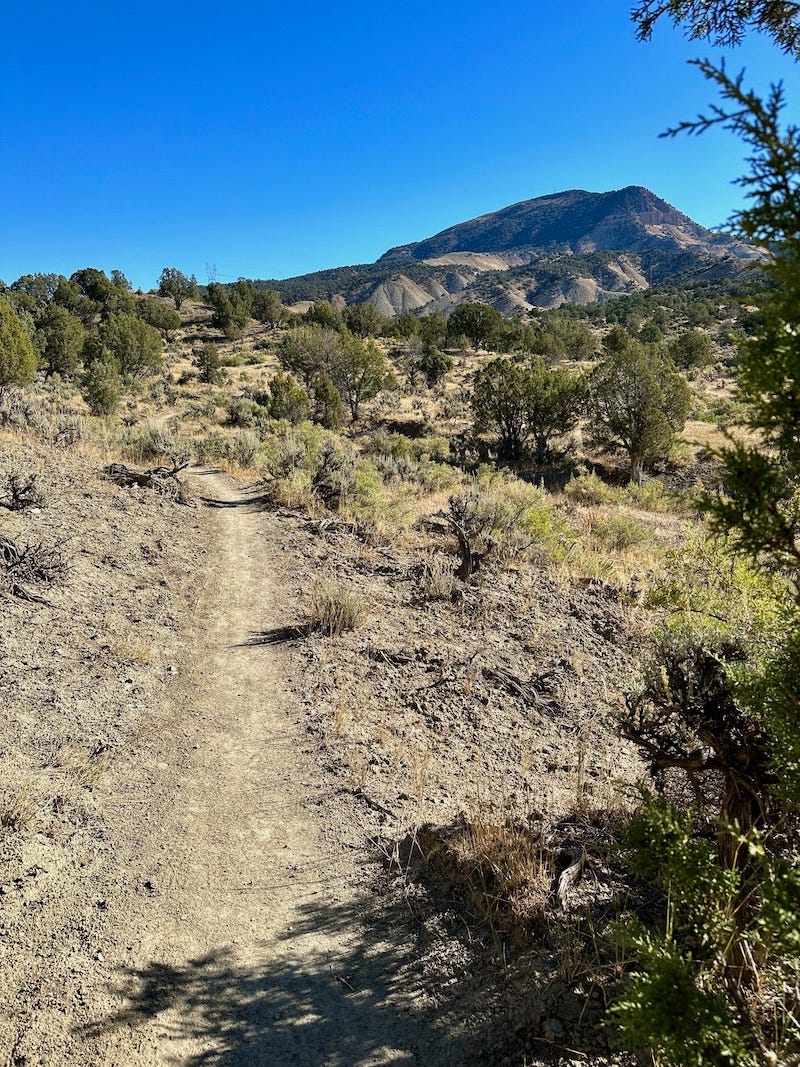
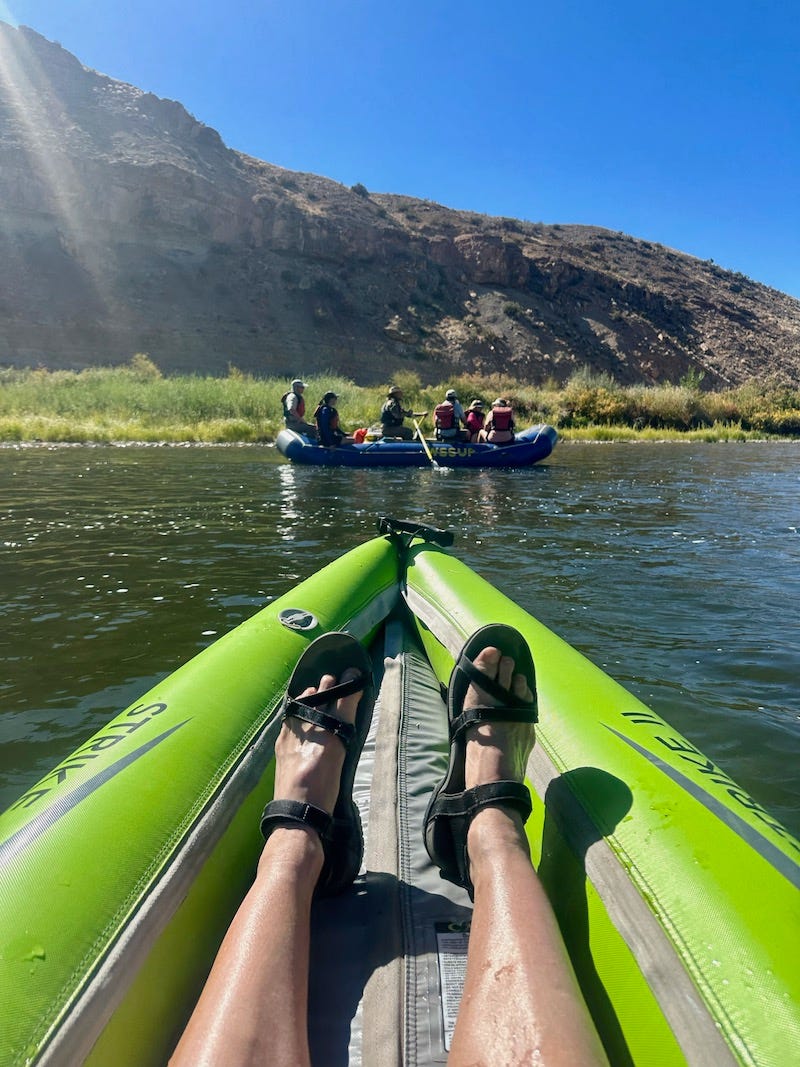
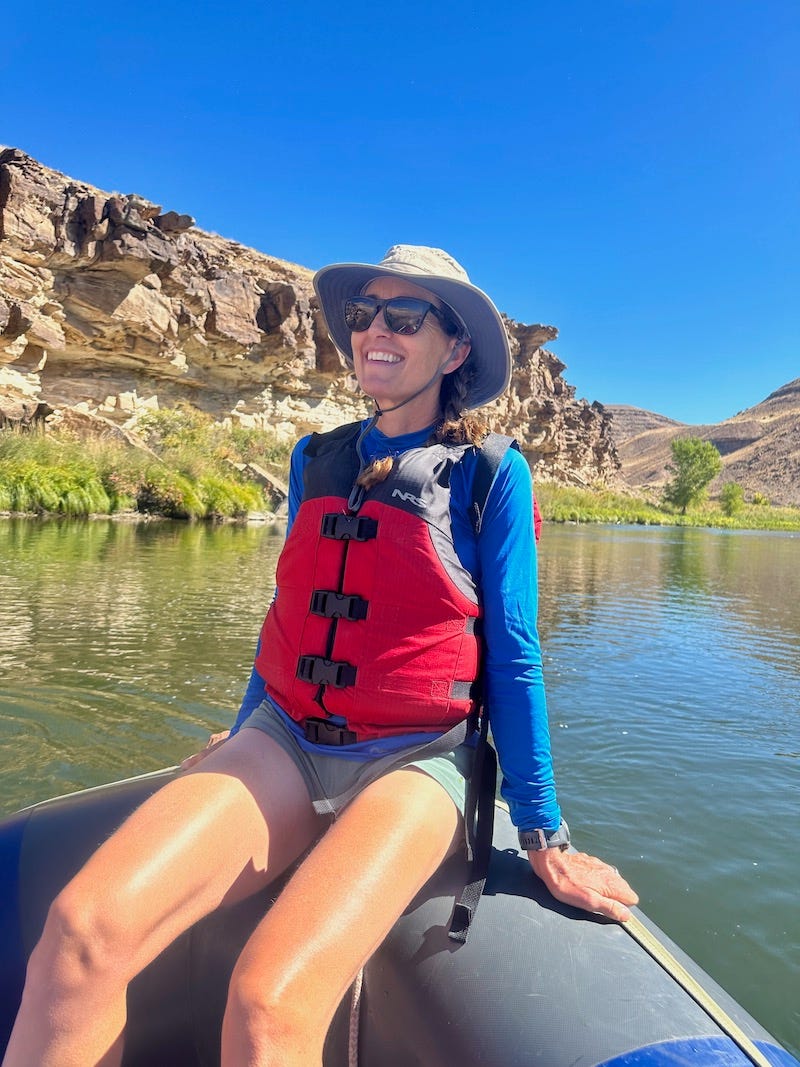

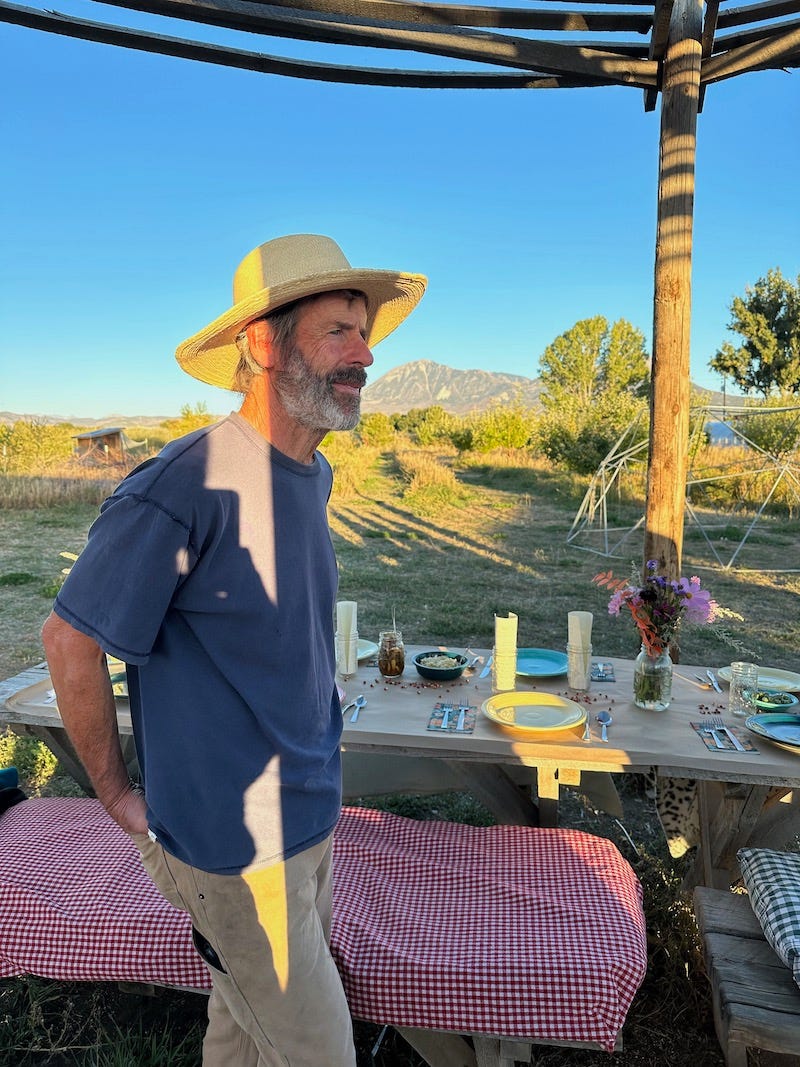

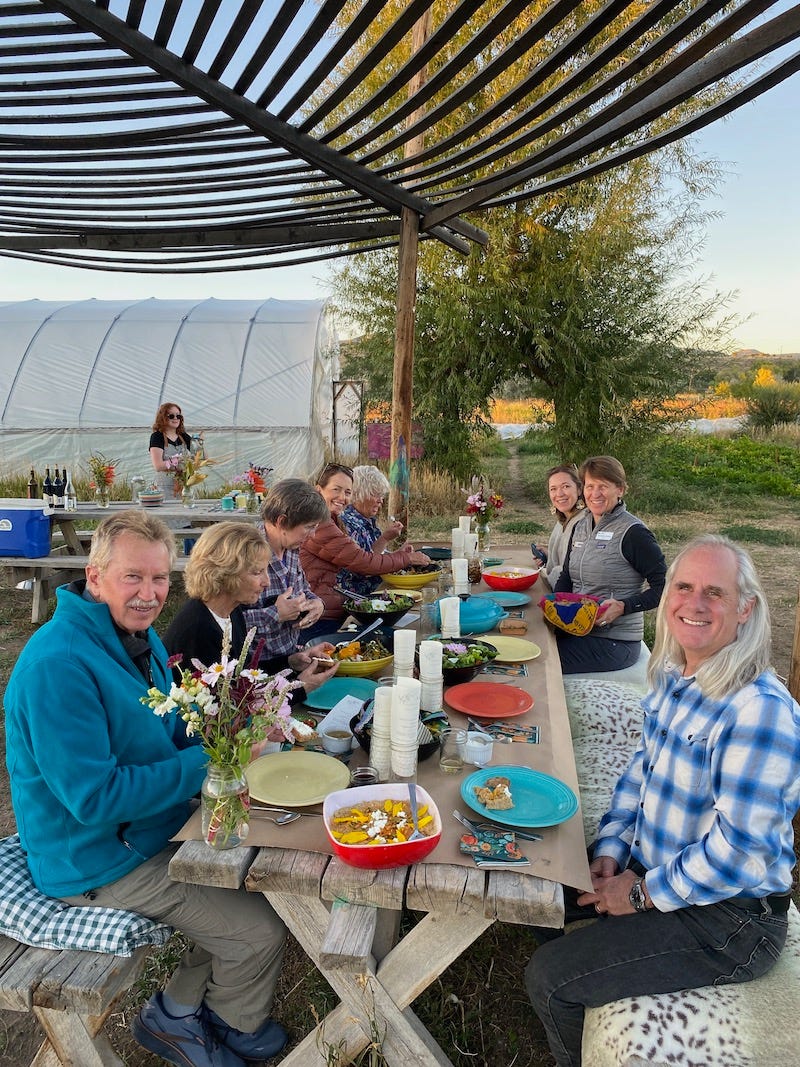
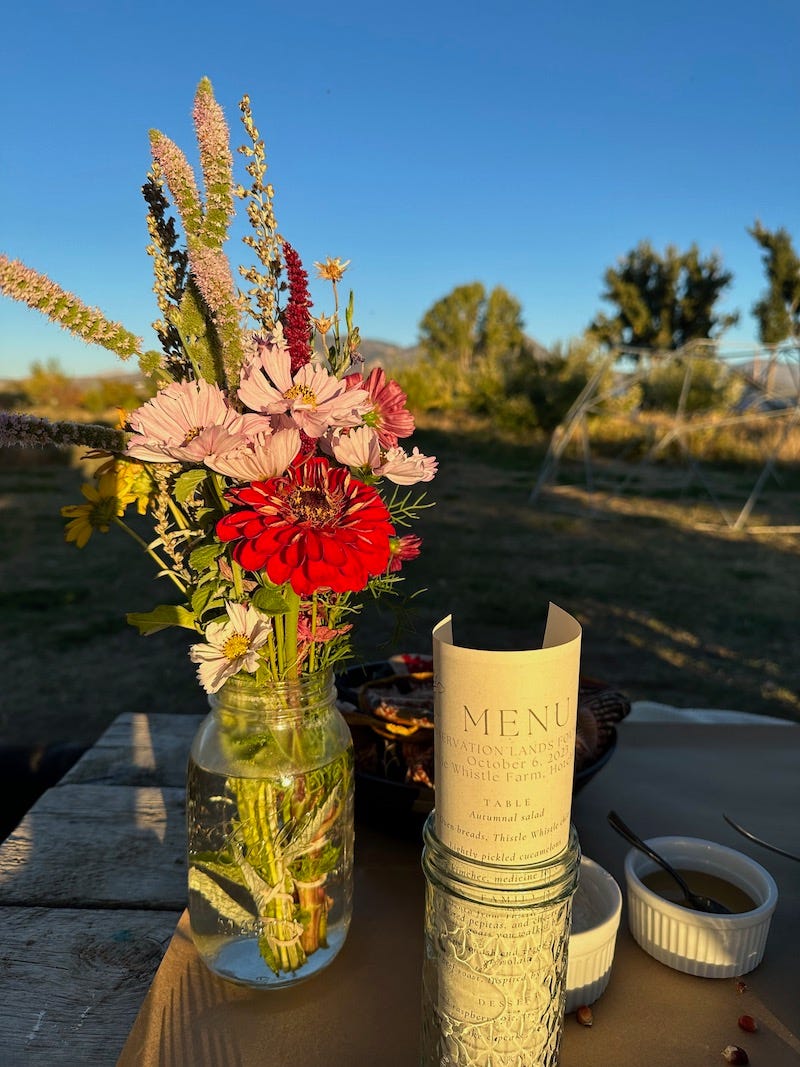

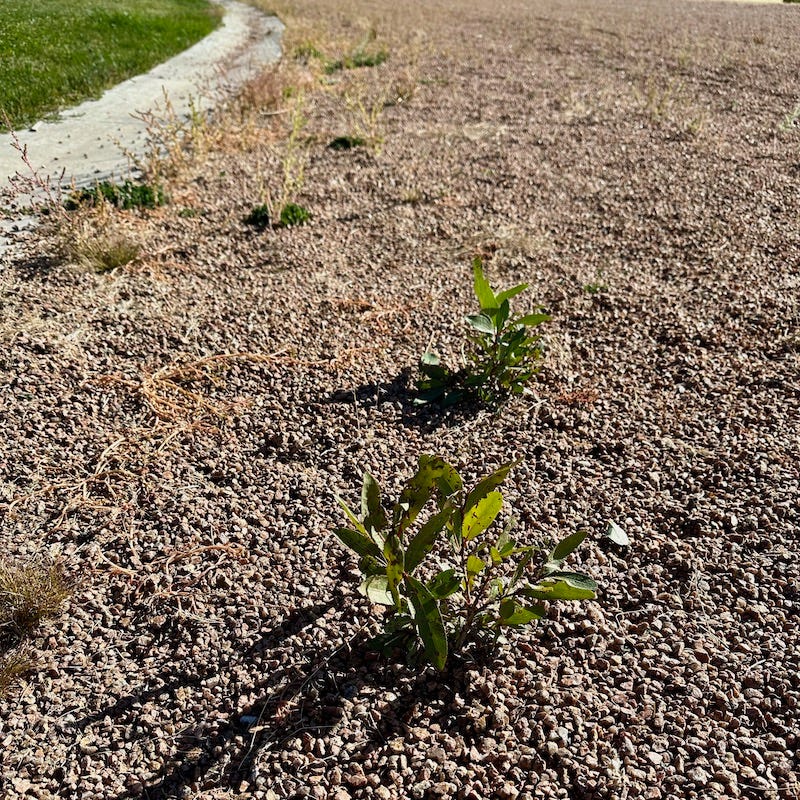

Been wanting to add track workouts to my ultra training! Thanks for the reminder. any favorite ones???
Sounds like a great vacation. Lovely spot. Thanks for the training reminder. In a moment of weakness i signed up for the 5k the day before the 1/2. I know both of these distances are probably short for you, but 5k is really short for me. Guess i should give it some practice runs.